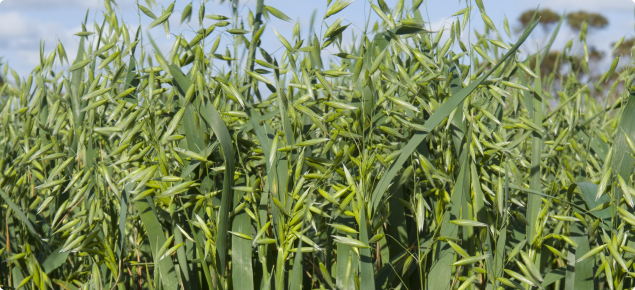Crown rot is a significant limitation to grain production in Western Australia, and appears to be increasing. Management strategies to minimise yield loss in cereals are restricted to a cereal break, inter-row sowing, cereal variety choice and controlling the summer and autumn green bridge.
With the recent increases in milling prices for oats and the growers from the non-traditional growing region (low rainfall areas) interested in growing oats, there is an increased need to evaluate varietal tolerance to crown rot in the field to demonstrate economic benefits of adoption to growers.
Oats are considered susceptible to crown rot and also suffer yield losses to both Fusarium pseudograminearum and F. culmorum which contribute to the disease. Observations from the east coast of Australia have identified a recent paddock, where oats were severely infected with F. culmorum. In WA, a two year survey identified that F. culmorum was primarily found in the cooler and higher rainfall regions of the south west of WA, which is also the traditional oat growing region. F. pseudograminearum has been isolated from across the entire growing region of WA.
| Site | Pingelly |
|---|---|
| Season | 2016 |
| Treatments |
Factor 1: Crown rot inoculum
(Inoculum rate at 2g/m of row)
Factor 2: Oat/wheat variety
|
| Crop | Six oat varieties compared to two wheat varieties |
| Fertiliser | Agras at 100kg/ha at 3cm depth below the seed. Trial supplied with additional nutrients during season as required (40N at 5‒7 weeks based on season). |
| Fungicides | Standard oats fungicides as required for management of foliar diseases – Prosaro and Folicur not used as these have an effect on crown rot |
| Herbicides | Weed management as necessary |

